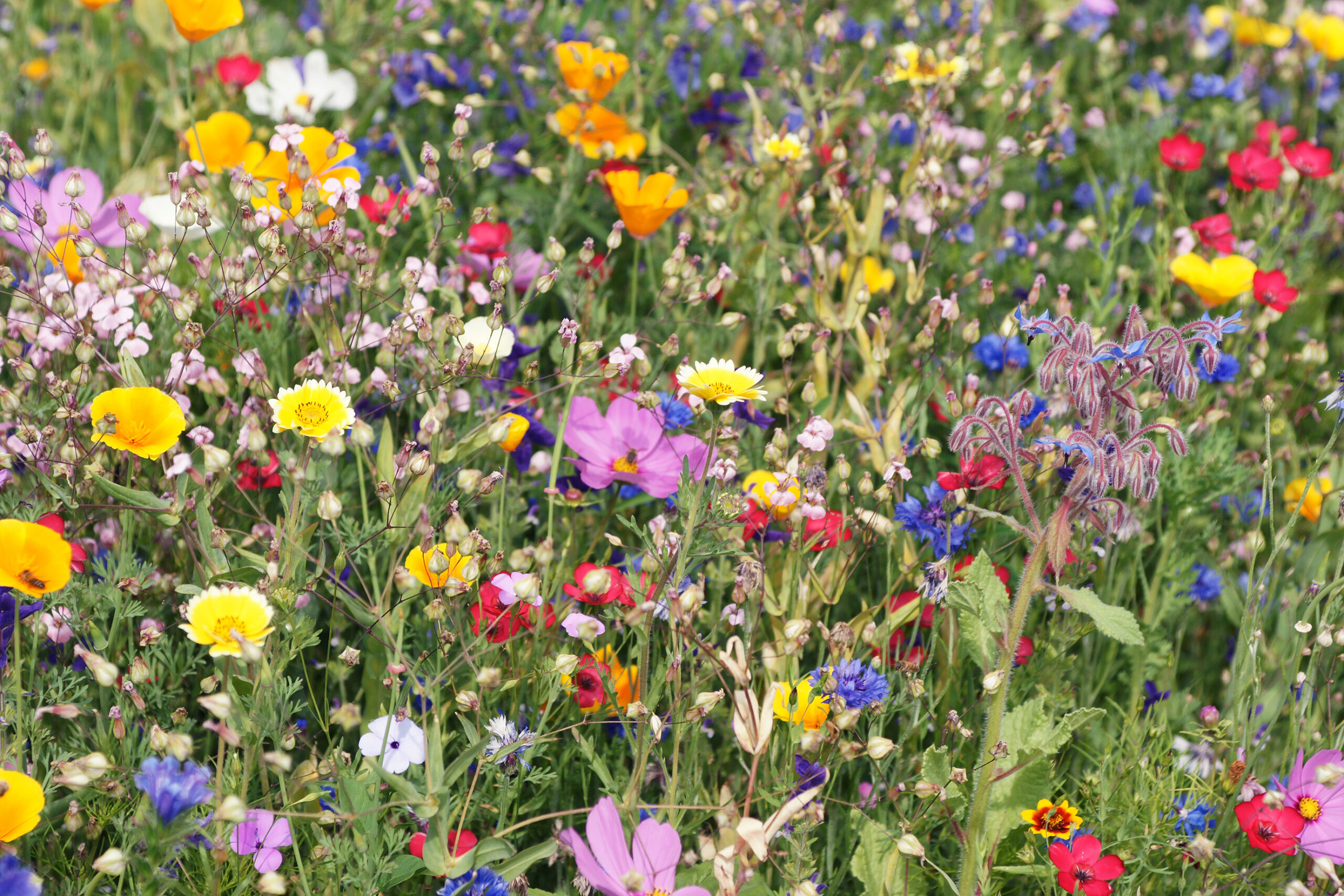Spring has officially sprung, which explains why flowers are constantly on our brains. There’s nothing like going for a nice walk in the evening and seeing all of the blooming flowers adorning people’s yards. Before planting flowers on our properties, there are many factors to consider. How much sunlight and water does each flower type need? Will this species grow in Texas soil? What types of pests could these flowers attract — for better or for worse?
Wildflowers have simple answers to all of these questions since they’re some of the easiest flowers to grow. They are not as fragile or temperamental as the flowers we’re used to seeing. They need full sunlight and not much water to thrive, which makes them an easy addition to most yards. Some people consider wildflowers to be an effective control method for garden pests, but why is that? Let’s explore the main benefits of wildflowers and their pests that are either helpful or hurtful.
The Benefits of Growing Wildflowers
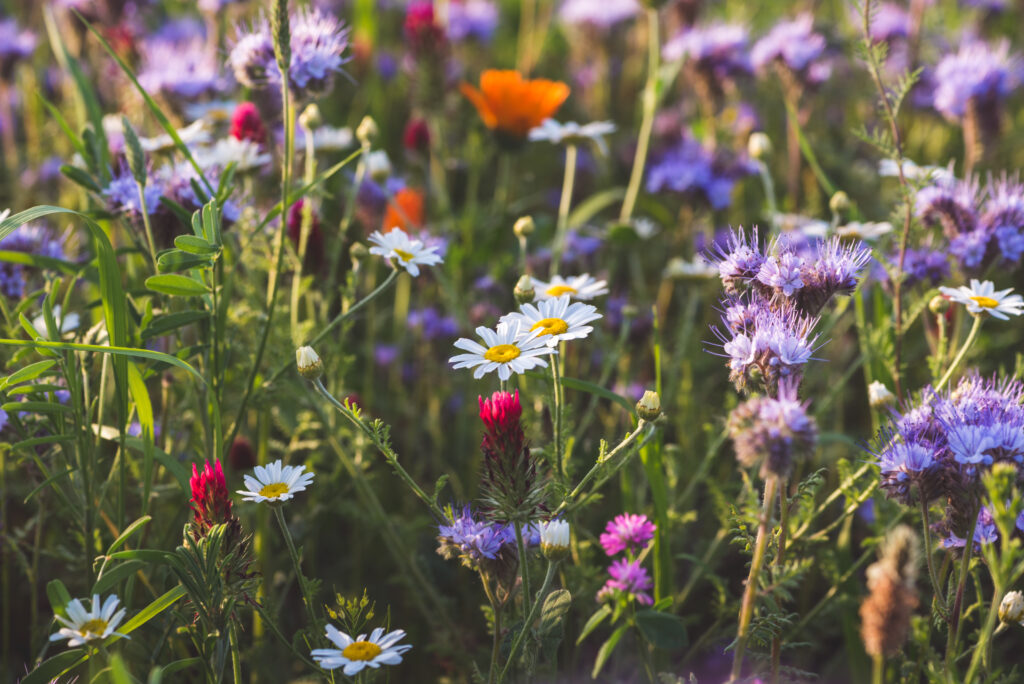
Wildflowers are usually found on the side of the road or in an empty field, but they are easily grown in most yards — with a bit of patience. Annuals take about 8 weeks to fully bloom, and the other types (biennials and perennials) take even longer. But the simple beauty of wildflowers is arguably worth the wait, especially when you also consider the benefits of these tough flowers.
These are some of the common benefits of growing wildflowers:
- Boost the health of the soil
- Require little water
- Are low-maintenance
- Thrive in “bad” soil
- Are self-producing
- Can grow in forgotten areas of the yard
- Are more cost-effective than other flowers
- Adapt to most environments
- Are best planted in spring to get established
Pollinator Friends
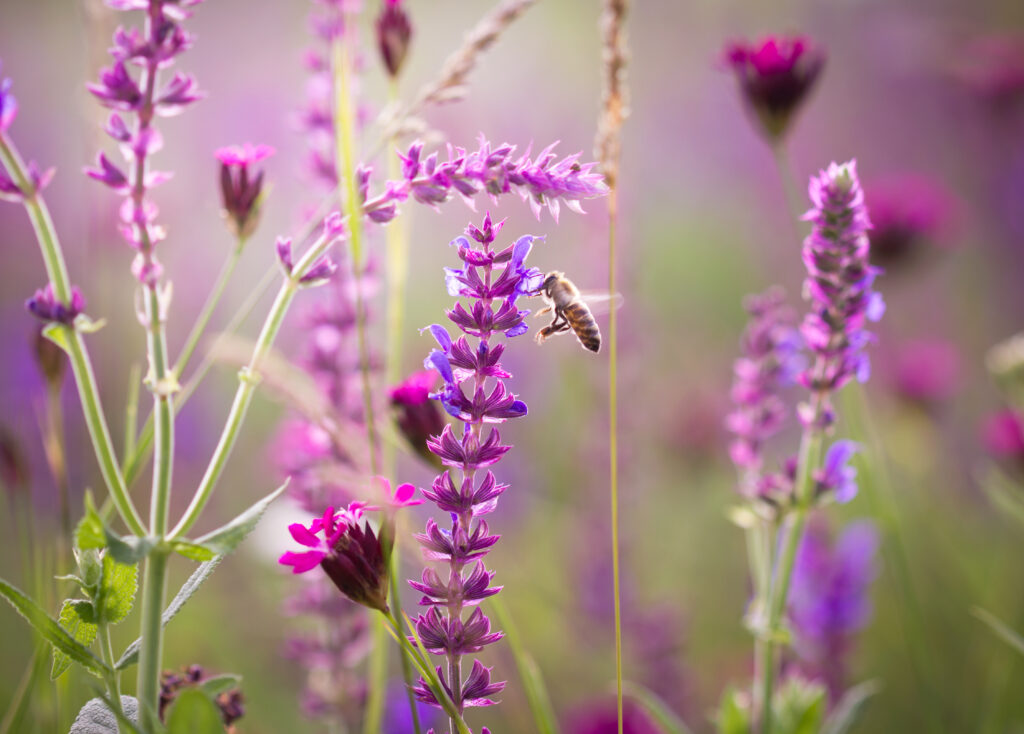
While many pests exist to harm our lovely flowers and plants, some species are actually friends with the flora and fauna. Wildflowers rely on these insects to not only pollinate their own kind, but also to keep harmful pests at bay. If not for these specific critters, destructive pests would run rampant in the garden.
There are many types of pollinating and beneficial insects, but the ones that frequent wildflowers gardens are:
- Bees: They’re one of the most popular flower-visitors for a reason. Bees, especially bumblebees, pollinate most flowers because the pollen sticks to their fuzzy bodies and deposits on the next flowers. They’re also generalist foragers, so bees aren’t too picky with the flowers they gather pollen and nectar from.
- Ladybugs: These insects only eat nectar and pollen when they don’t have access to their favorite food: garden pests. Ladybugs devour aphids, scale insects, and mites. They are major protectors of wildflower gardens since ladybugs thrive near aphid-ridden gardens.
- Flower Longhorn Beetles: The first part of this insect’s name is true since they love flowers, but the “longhorn” title is a bit misleading (they just have antennae). Flower longhorn beetles eat pollen and nectar as adults, making them major pollinators in the garden.
- Butterflies: Also popular pollinators, butterflies are found in gardens across the country. They prefer flowers that are easy to access, and wildflowers fit the bill. Butterflies naturally pollinate as they drink nectar because the pollen collects on their legs and proboscis (long mouthpart) from each flower.
- Hover Flies: The name of these flies suits them since they actually do hover above flowers while they determine if it’s a good food source. Hover flies visit most plants commonly found in the yard and are excellent pollinators since they feed on pollen and nectar as adults. When they’re larvae, hover flies are still beneficial because they feed on aphids!
Wildflower Enemies
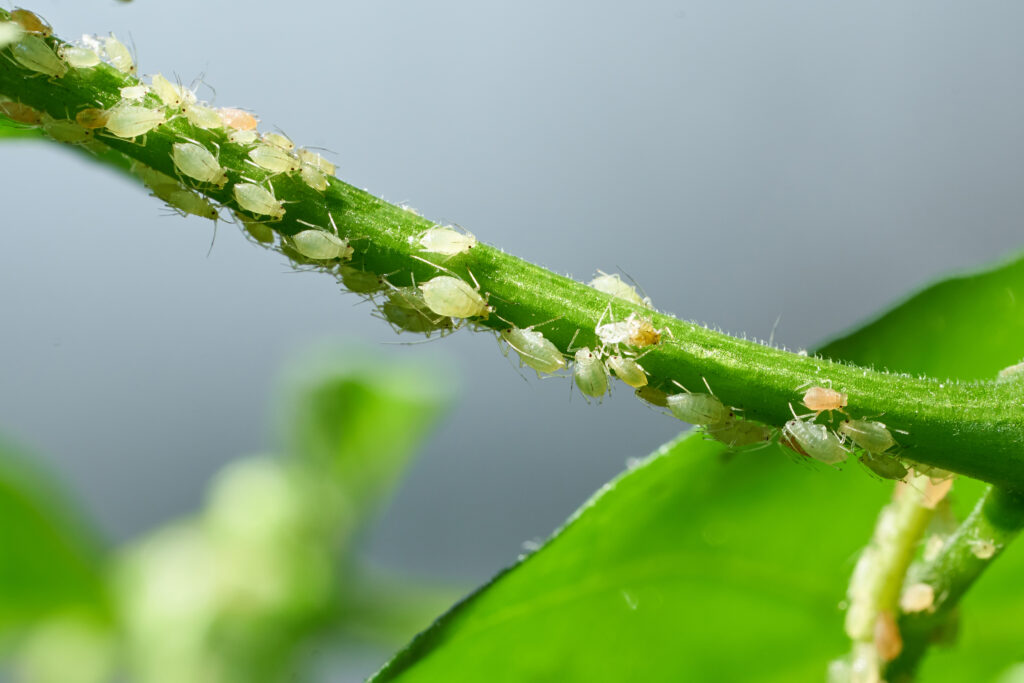
On the flip side, certain pests seem to exist for the sole purpose of devouring flowers and ruining our carefully-crafted gardens. There are plenty of resources (including our blog) about detecting and preventing common plant pests, so it’s a good idea to research which types of pests are attracted to the wildflowers you plan on growing.
For now, the two main types of destructive wildflower pests to know about are:
- Slugs & Snails: These nocturnal pests thrive in cool, moist environments, and are usually found in the soil as a result. They can be introduced to a yard if they hitchhike on a live plant from the nursery or garden center. Snails in particular love leaves and young plants, which means they can cause plenty of damage to a new garden. Some of the common signs of their presence are tiny eggs near plants, holes in leaves, and loss of seedlings.
- Aphids: Possibly the most infamous garden pest ever, aphids bring destruction to every garden they visit. They prefer blooming plants over woody ones, and drink the vital sap from these plants by piercing the leaves with their sharp mouthparts. Aphids lay their eggs on the plants they infest in order to give their offspring an immediate food source. Wildflowers are tough, but even they can’t withstand constant feedings from aphids without any help from beneficial insects.
Don’t be discouraged by these pests and their insatiable appetites. Fun fact: many farmers plant wildflowers next to crops so that the beneficial insects take care of any hungry pests wanting to harm the produce! There may be something to the idea of using wildflowers as basic pest control after all…
Prepare & Prevent
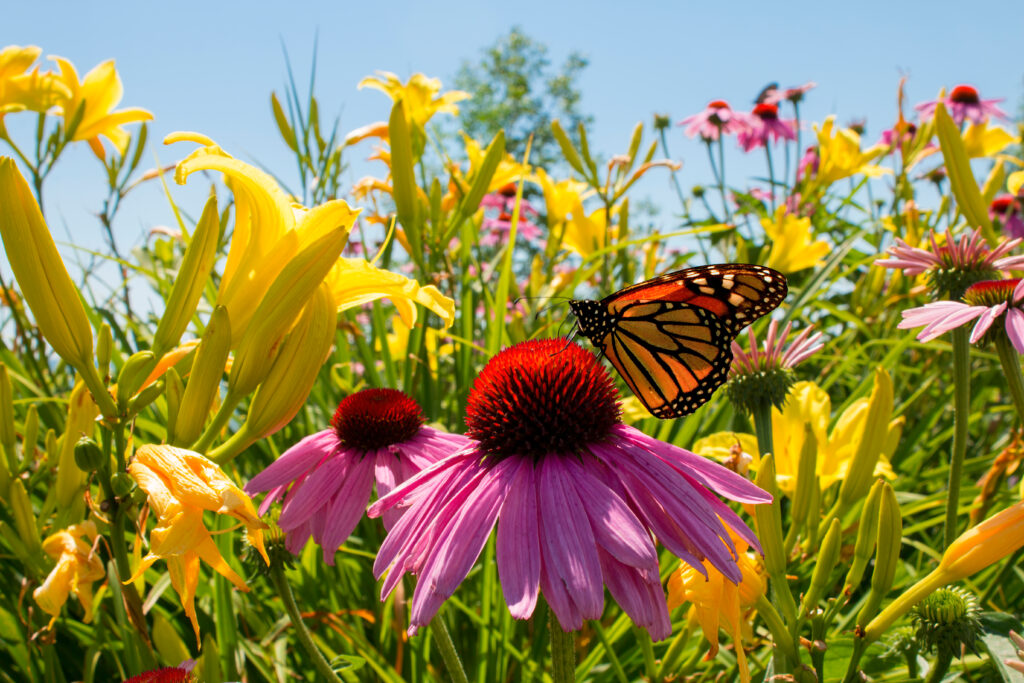
Like we said earlier, every flower species has its own needs and care instructions. The basic ways to ensure that your wildflower garden thrives this year are simple steps that you probably thought of already, but it’s still worth discussing here.
To care for your wildflowers, we recommend doing these simple steps:
- Help the soil. Remove all leaf litter and natural debris from the dirt, and loosen the topsoil before spreading the seeds. There shouldn’t be any objects preventing the wildflowers from pushing through the soil once they sprout.
- Plant the seeds properly. Spread the seeds evenly over the site, and press them firmly into the soil. Some gardening experts recommend using your feet or a piece of cardboard to make sure the seeds are completely pressed in the soil.
- Water them consistently. For the first 4 to 6 weeks of your wildflower garden’s life, water the flowers every day. They need the constant moisture in order to blossom later. Once they’re established, the rainwater is usually enough to sustain wildflowers.
- Remove weeds. It’s good to pluck weeds in the whole yard — they can harm plants and hide garden pests — but pulling them from the garden is especially important. Weeds are the mortal enemy of wildflowers, so check your garden for new weeds often.
- Check on them. While wildflowers are self-sufficient and don’t need constant attention, it’s still good to monitor their health throughout the year. They should attract pollinators and carnivorous insects, not destructive garden pests. Make sure any pest problems or weeds are taken care of immediately.
Protect Your Garden With Romney
Wildflowers are hardy flowers that can survive all kinds of conditions, but even these flowers can’t withstand constant attacks from hungry pests. At Romney Pest Control, we are dedicated to greatly reducing the Texas pest population. Our technicians are fully trained and experienced in solving pest issues with the utmost efficiency and care. We create a customized treatment plan for each client because pest control should not be a “one-size-fits-all” practice. We only use treatments that we know are effective against Texas pests and won’t flood the property with dangerous chemicals. For a free quote on our efficient services, contact us today!
Citations
How to attract ladybugs to your garden and keep them there. (2020, May 2). Drake’s 7Dees. Retrieved March 19, 2024, from https://www.drakes7dees.com/ladybugs/
How to control snails. (2023, October 2). Gardeners Supply Company. Retrieved March 19, 2024, from https://www.gardeners.com/how-to/controlling-snails-in-the-garden/7309.html
Iannotti, M. (2023, March 28). Designing a dreamy wildflower garden you can maintain. The Spruce. Available at https://www.thespruce.com/wildflower-gardening-1403564 (Accessed on March 19, 2024).
Leigh Mattern, J. (2018, February 6). How wildflowers can help control pests in your garden. Country Living. Available at https://www.countryliving.com/gardening/garden-ideas/a16636562/wildflowers-can-reduce-pesticide-use/ (Accessed on March 19, 2024).
Polomski, R.F. (Dr.) & Wagner, L. (2017, July 23). Wildflowers. Clemson Cooperative Extension: Home & Garden Information Center. Available at https://hgic.clemson.edu/factsheet/wildflowers/ (Accessed on March 19, 2024).
Zammett Ruddy, E. (2024, March/April). Go wild. HGTV Magazine. 75.

